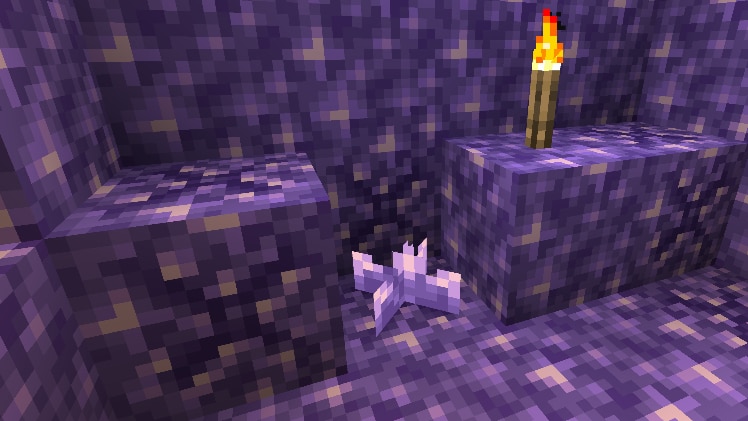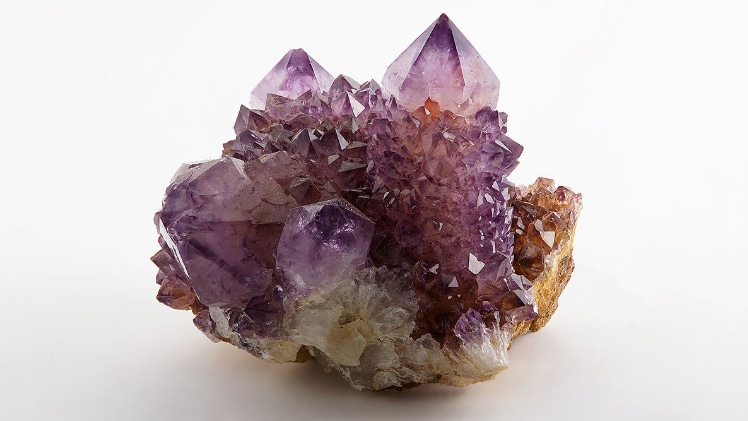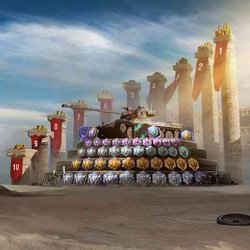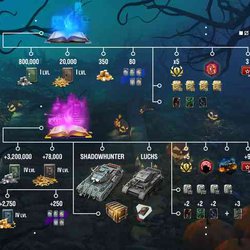In the first part of the upcoming Caves & Cliffs update, Minecraft is getting a lot of exciting new underground features. One of those is the amethyst geode – an uncommon geological formation that contains a new resource – amethyst shards , which just so happens to be our item of the week. What a lucky coincidence!
Here’s how they work. Geodes spawn underground and are surrounded by smooth basalt blocks. They’re also always partially submerged in some kind of solid block – usually stone. Dig through that, or find a crack in the surface, and you’ll uncover a layer of calcite – another new mineral. Inside the calcite layer, you’ll find something rather special – a mix of amethyst and budding amethyst blocks – as well as clusters of amethyst that when broken drop amethyst shards.

Here’s a pro tip – don’t break the amethyst blocks that have an x-pattern marked on the surface of the block – the “budding” ones. Why not? Because over time they’ll spawn more clusters of shards for you, but they’re destroyed when broken (or moved by a piston) – even if you use a silk touch tool.
That’s not a bug, it’s intentional! I’ll let Minecraft developer Cory Scheviak explain:
"It was important to us that amethyst was not just another ore that you can mine once and take home to grow. By confining the amethyst cluster growth to the budding amethyst block, which you can only find where geodes generate and cannot be moved, we ensured that players have a reason to return to the geode over and over."
So when you find a geode, it’s a good idea to remember the location somehow, because you’ll want to come back to it again and again to harvest clusters. How will you mark it? Well, that’s up to you.
Once you’ve got a nice collection of shards, you might be wondering what to do with them. At the time of writing, there are three recipes. Four shards in a crafting grid will create a block, one shard and two copper ingots will create a spyglass – more on that in the coming weeks. And finally, surrounding a piece of regular glass with four amethyst shards will let you make tinted glass – which blocks light while still allowing you to see through it. Handy for creating mob farms!

In the real-world, amethyst is also a purplish crystal, and it’s actually a variety of quartz. Its name comes from the Ancient Greek word “methysko”, meaning “drunk”, and the prefix “a”, meaning “not”. So a literal translation would be “not drunk”. This all stems from the Ancient Greek belief that wearing a necklace made of amethyst, or even in some cases carving a cup from it, would protect the drinker from getting drunk. It doesn’t do that. At all. My theory is that by the time someone realised it didn’t work they were probably so drunk that they couldn’t remember the next day, and the myth persisted.
The purple colour comes from iron impurities and having been irradiated at some point in its long history, and it’s most commonly mined in Siberia, Sri Lanka, Brazil, Uruguay, and the Far East. Just like in Minecraft, it’s sometimes found inside geodes – which exist in real life too – though not usually as large as the ones in Minecraft.
Now, prepare yourself and get ready to hunt down a geode!


















0 Comments:
Leave a Reply